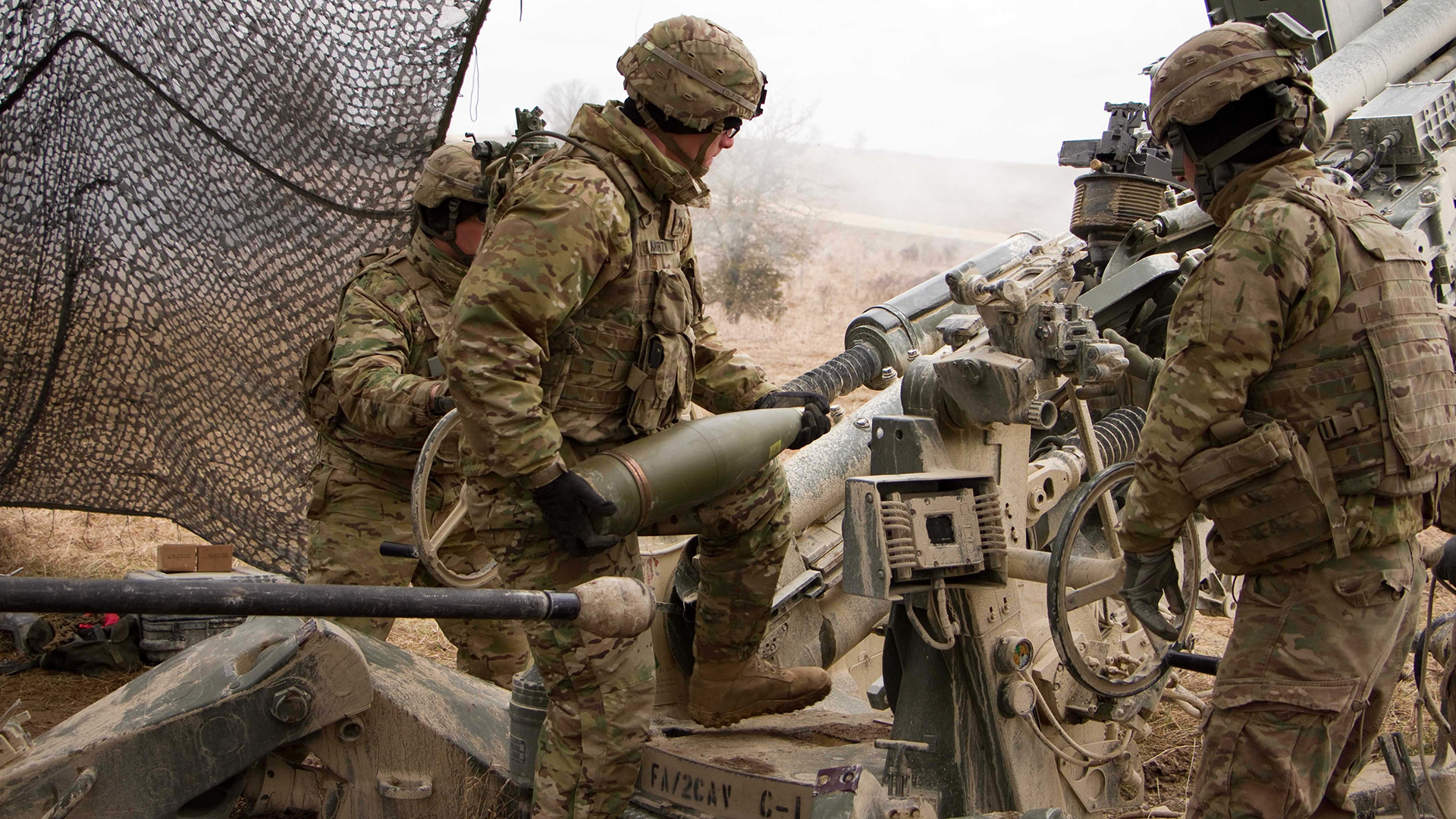

The Army expects production of 155mm artillery shells will jump more than threefold next year from 24,000 per month to between 80,000 and 85,000 per month, said Douglas Bush, assistant secretary of the Army for acquisition, logistics and technology.
Speaking to reporters on Monday, Bush said he could not be “too specific” about when the production of 155mm artillery shells could reach 85,000 per month, which would translate into 1 million new shells per year.
Initially, he said production would reach more than 80,000 per month “over the following year,” and then later said the Army’s goal is to reach that production goal “in Fiscal Year 25,” which starts next October.
Some of the reasons it is taking so long to increase artillery shell production are that the Army is establishing entirely new production lines for the shells themselves while also increasing production of the triple-base propellants that launch the projectiles and increasing the capacity to load shells with explosives, Bush said.
Subscribe to Task & Purpose Today. Get the latest military news and culture in your inbox daily.
“What takes the longest is acquiring and installing the machine tools and the machinery that makes the explosives and things like that,” Bush said during a media roundtable.

Meanwhile, the Army is also investing in new technologies to shape metal that will make artillery shell production cheaper and more efficient, he said.
The accelerated artillery production comes as the U.S. military has provided Ukraine with more than 2 million 155mm artillery shells since February 2022, according to the Defense Department.
The Defense Department has given Ukraine so many unitary artillery shells that President Joe Biden recently approved providing Ukrainians with cluster munitions to serve as a temporary solution until the United States and its allies can increase production of 155mm shells, former Undersecretary of Defense for Policy Colin Kahl told reporters on July 7.
The Army recently awarded IMT Defense Corp. a $162.7 million multi-year contract to produce M1128 155mm shells, and the service expects to award three other similar contracts specifically to support artillery shell production, Bush said on Monday.
Bush also dismissed what he described as “uninformed speculation that overstates risks to our stockpiles” amid reports that the Defense Department had depleted its supplies of artillery shells and rockets to assist Ukraine.
“There’s a lot of support,” Bush said. “We’re working through our allies to help make sure Ukraine is supplied. So, it’s not all the United States, and I think that’s a success story. The United States is the arsenal of democracy, but we can have multiple arsenals in other democracies, and we have those, and they’re helping.”

However, Biden acknowledged in a July 7 interview with CNN’s Fareed Zakaria that the U.S. military’s supply of artillery shells had diminished.
“This is a war relating to munitions,” Biden said as he explained his decision to provide Ukraine with cluster munitions. “And they’re running out of that ammunition, and we’re low on it. And so, what I finally did, I took the recommendation of the Defense Department to – not permanently – but to allow for this transition period, while we get more 155 weapons, these shells, for the Ukrainians.”
Even though the United States is the “arsenal of democracy,” defense officials have repeatedly said it will take years for defense industry to increase production of shells, rockets, and missiles that the U.S. military badly needs now.
Indeed, if 155mm shell production reaches 85,000 per month in late 2024, it will take place more than two-and-a-half years after Russia’s invasion of Ukraine, which revealed that the United States would need a gigantic amount of munitions to fight a war against China or Russia.
The defense industrial base’s slow response to increasing production stands in stark contrast to America’s war industry during World War II, which produced 41 billion rounds of ammunition, more than 88,000 tanks, and nearly 300,000 aircraft.
However, Bush said it is not fair to compare the current production rates of 155mm shells with how many munitions the United States churned out during World War II.
“First of all, we are not at war with Russia,” Bush said. “World War II was a fundamentally different situation. The United States mobilized a third of its entire economy. So, one is a question of scale and resources. With regard to World War II – where they, of course, were making more simple equipment – that also took about a year to 18 months to hit that ramp-up. We, of course, are investing in new technologies as part of this ramp-up that we hope will give us in a potential future conflict an ability to ramp up faster.”
The latest on Task & Purpose
- The US can’t use its $110 million drone base in Niger
- Inside an Air Force Pararescue mission in the middle of the Pacific Ocean
- Country music star Craig Morgan re-enlists at age 59
- What you need to know about the incoming Sergeant Major of the Marine Corps
- 2 US military veterans killed in Ukraine during intense fighting [Updated]